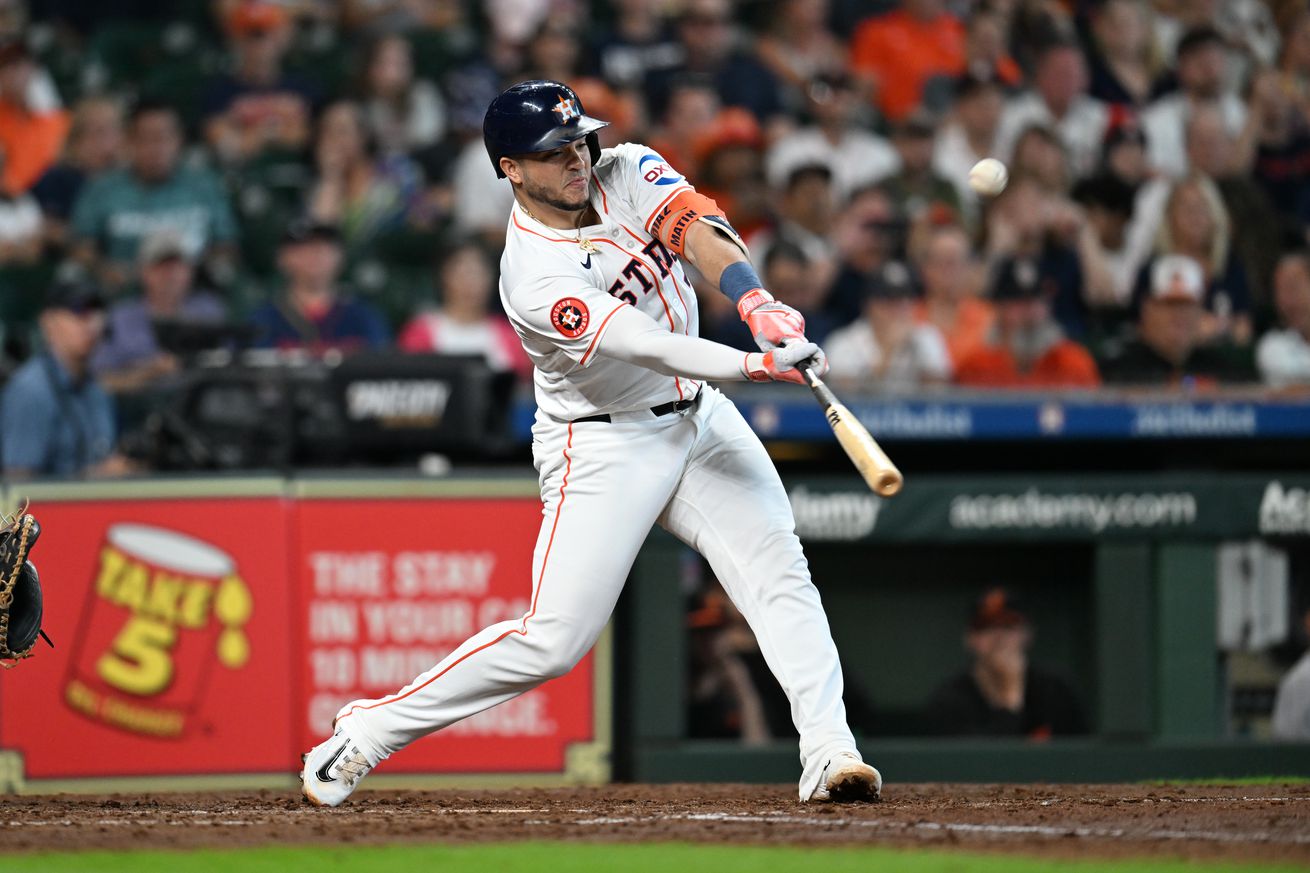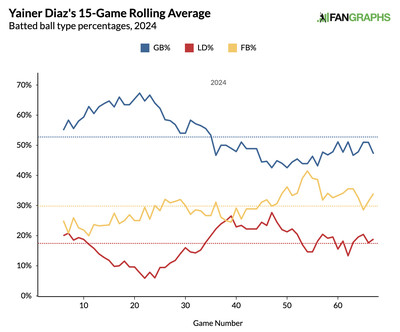
It was no secret that Yainer Díaz was struggling to start the season. In his first taste as a regular starter on a Major League club, the young catcher was hitting .251/.281/.364 with a 82 wRC+ from March 28 through May 28, or 199 plate appearances. His power, in particular, was non-existent, with a .112 ISO across those first 199 plate appearances and only three home runs. The struggles wasn’t a huge surprise as there isn’t a position arguably more difficult to play than catcher, especially for a regular. The grind at the position is real and an adjustment period was always a possibility. And, do I dare say, should’ve been expected.
To be clear, Díaz is still working on his craft behind the plate. The learning curve for each catcher varies and there have been the occasional hiccups defensively along the way. Progress, too, but you get the point. Again, not exactly an unexpected development as not all improvement is linear. But Díaz has always been viewed as a bat-first catcher. We saw it last season when he had a 127 wRC+ last season as a backup in 397 plate appearances. That offensive potential was a primary reason — among others not related to Díaz — why the Astros made the change from Martín Maldonado for 2024.
But the majority of Díaz’s present value hinges on his production as a hitter. That’s why his slump to open the season was a disappointing development. Of course, this club has had bigger issues to worry about than a slow start from Díaz, but it certainly didn’t help matters. One reason why he was struggling at the plate: The type of contact he was generating.
Of all the batted ball types, ground balls are, by far, the least valuable. Hitters last season had a .228 wOBA on ground balls. Line drives, however, had a .658 wOBA compared to .441 for fly balls. So, how does that relate to Díaz? Look at his batted ball distribution this season.

Ground balls obviously were an issue for Díaz to start the season. We saw it in games during his at-bats and within his metrics, including launch angle. But in recent weeks, we’ve seen a regression back to what we’ve seen from Díaz in the past, namely more line drives and fly balls. For a hitter with his profile, that’s been a positive development, as we’ve seen reflected in his metrics in recent weeks.
5/29 to 6/22 (63 PA)
.267/.302/.533, 4 HR, 50% GB%, .267 ISO, 134 wRC+
For these Astros to continue to climb out of this early season hole, they’ll need Díaz to continue his improvement as a hitter, namely with his batted ball distribution. I should also note how Díaz has also improved his plate discipline, with his 13.9% strikeout rate on the season compared to 19.6% in 2023 along with a slight increase in his walk rate. There is a lot to like about Díaz as a hitter and I think there is the potential for more improvement as long as he maintains a lower groundball rate in addition to his improved plate discipline. This is a trend to monitor as we head into July and the remainder of the season to see if it sticks.